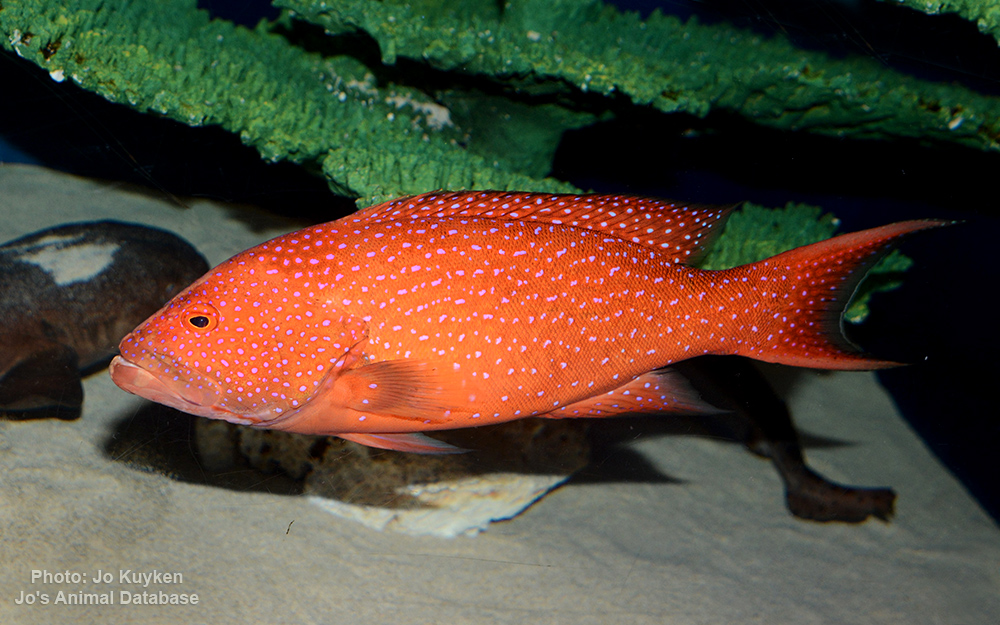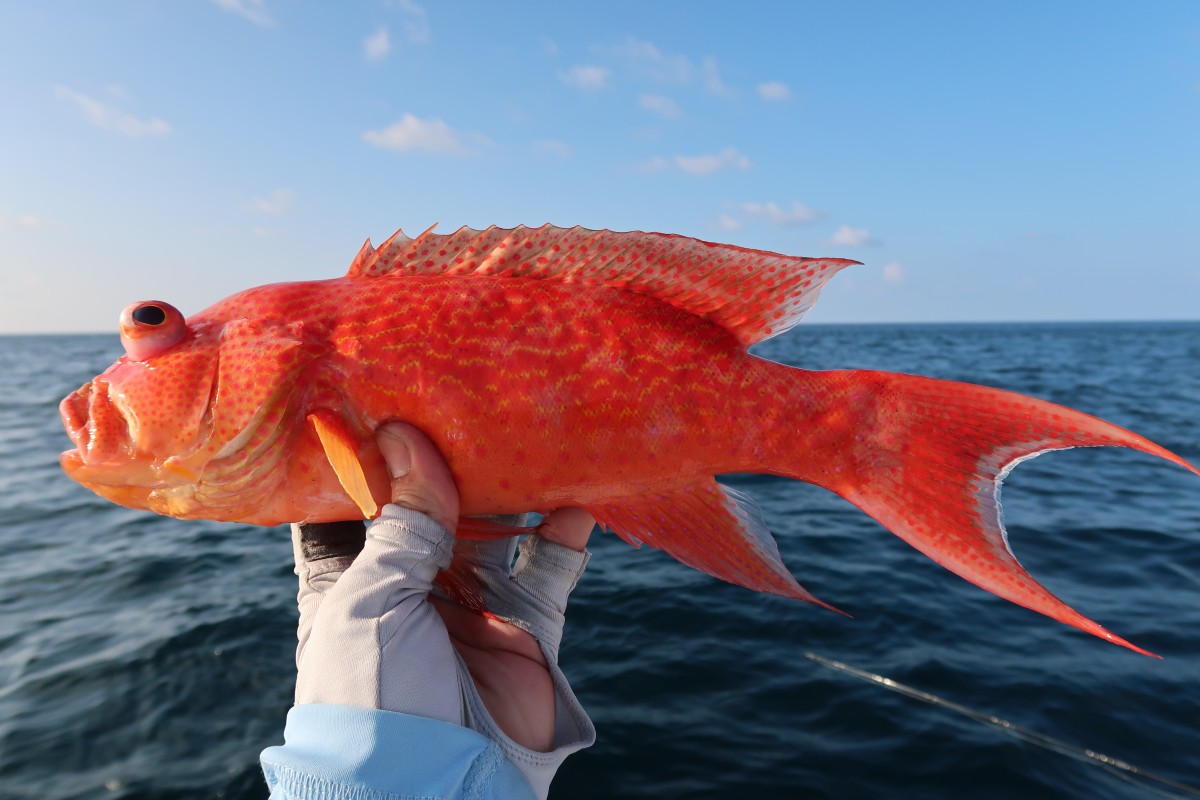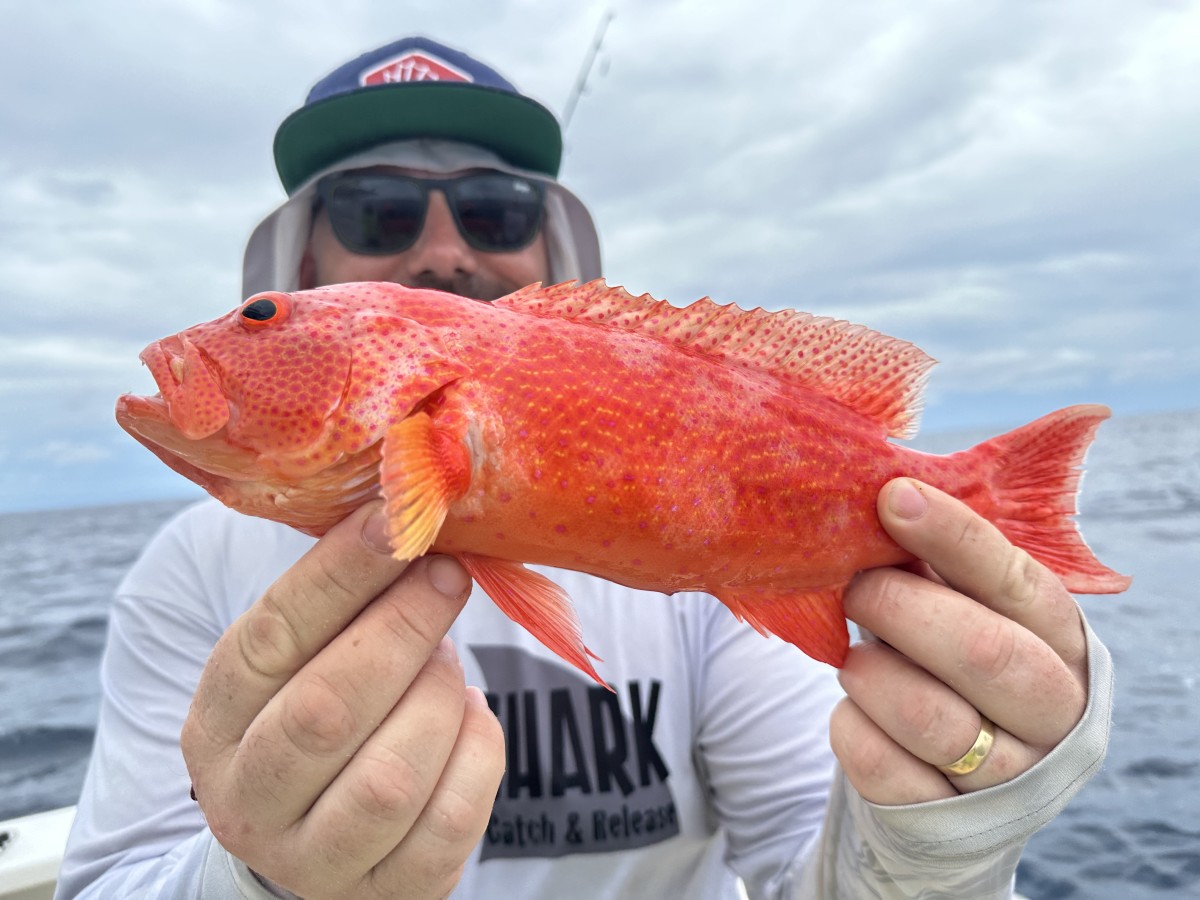White-edged lyretail
(Variola albimarginata)

Image source: Jo's Animal Database
Classification
General data
The white edged lyretail has an oblong shaped body on which the length of the head is longer than the depth of the body, the standard length of its body is 2.8-3.5 times its depth. The preopercle is rounded with fine serrations along its edge with the lower edge being fleshy. There are three flat spines on the gill cover, which has a straight upper edge.
The dorsal fin contains 9 spines and 14 soft rays while the anal fin contains 3 spines and 8 soft rays. The caudal fin is crescent shaped with its upper and lower lobes extended and are around two times the length of the fins middle rays.
The overall colour of this grouper is reddish and it is covered in blue spots.
The caudal fin has pale upper and lower margins and the central rays of the caudal fin rays have white tips creating a thin white line along its margin. There are occasionally faint, pale saddles on the back. It also has yellow wavy lines on its body and reddish spots on the head. The dorsal, anal and caudal fins have red to purple spots.
This species attains a maximum recorded total length of 65 centimetres (26 in).
The white-edged lyretail has a wide Indo-Pacific distribution. It ranges from the East African coasts between Kenya and Mozambique including Zanzibar and Mafia Island, across the Indian Ocean to the Seychelles, southwestern India and Sri Lanka and into the Pacific Ocean, north as far as the Ryukyu Islands of southern Japan, east to Samoa and the Cook Islands and south to Australia.
In Australia it is found from the Scott Reef in Western Australia, the Ashmore Reef in the Timor Sea to the Capricorn Group in the southern Great Barrier Reef of Queensland.












